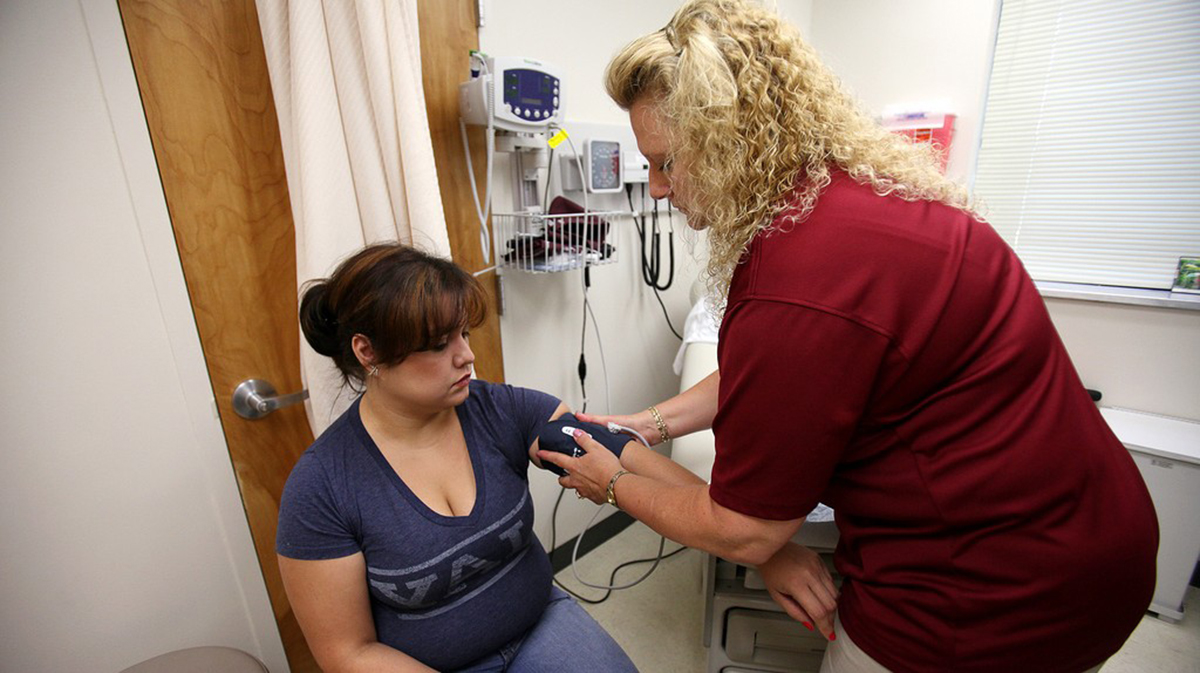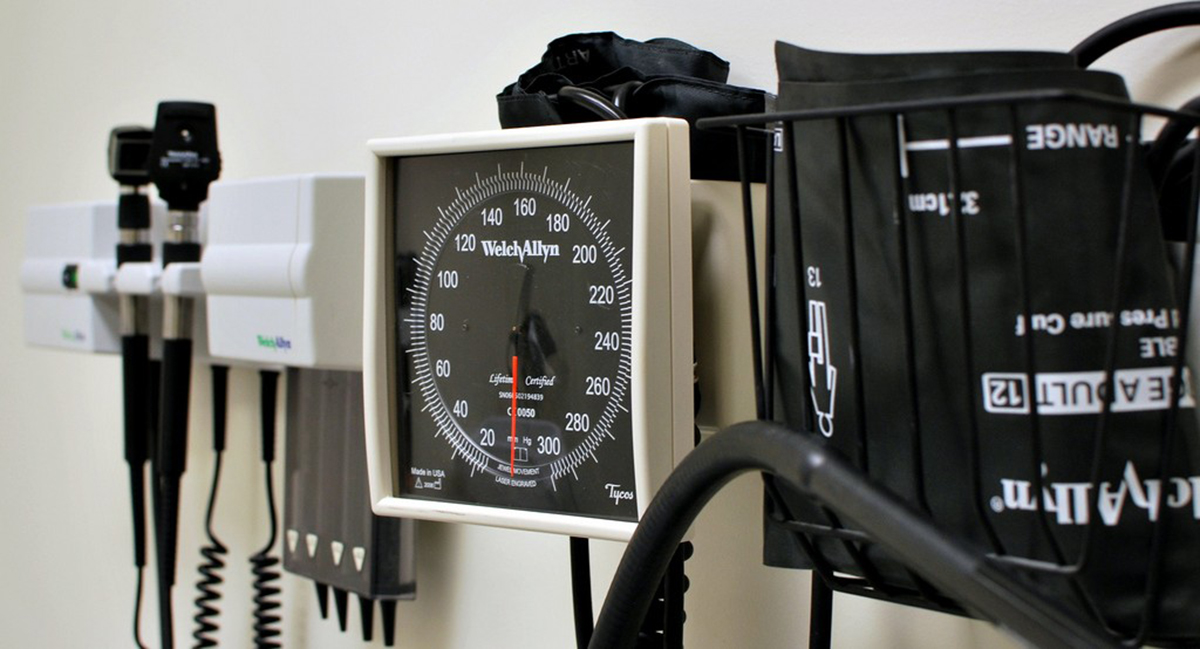Obesity rates, diabetes rates, and deaths from cardiovascular disease have actually started falling in parts of the United States, but these problems are still getting worse in the upper Midwest, especially in rural communities in Minnesota. The New Ulm community in rural, southwestern Minnesota, about 100 miles (160 km) southwest of Minneapolis, has pioneered a community-based effort to control the most important controllable risk factor for cardiovascular disease, high blood pressure.

Why Focus on High Blood Pressure (Hypertension)?
People who have high blood pressure (persistent readings over 140/90) are two to three times more likely to develop atherosclerosis, the condition also known as hardening of the arteries. Uncontrolled high blood pressure is a more significant risk factor in the development of cardiovascular disease than high cholesterol, diabetes, smoking, or family history, although all of those factors count. The National Health and Nutrition Examination Survey (NHANES) study found that nationwide, in the United States, about 31% of men and about 33% of women have high blood pressure.
That's nearly 75 million adults just in the USA who have high blood pressure. Of those 75 million adults, 4.1 million men and 6.9 million women have stage 2 hypertension, systolic pressure over 160 and diastolic pressure over 100.
Many people who have high blood pressure don't know it or don't do anything about it. In the US, the Centers for Disease Control estimate that:
- Up to 80% of the uninsured aged 20 to 39 who have high blood pressure don't get any treatment.
- Up to 35% of the uninsured aged 40 to 64 who have high blood pressure don't get any treatment.
- Even among people aged 20 to 64 who have private insurance, 20% have high blood pressure that goes untreated, especially among the very young.
- And even people who receive Medicaid or Medicare still don't get high blood pressure medication.
Treating hypertension isn't difficult, and isn't expensive.
Changing diet also helps, although the results of cutting back on salt and eating more vegetables usually are not dramatic. The most important task in treating high blood pressure, many experts believe, is simply making sure people know they have high blood pressure and that they need simple medical interventions along with exercise and diet.
See Also: Signs and Symptoms of High Blood Pressure
Community-Based Interventions for Hypertension
There's basically no way for people to get prescriptions for high blood pressure if they never see a doctor, and people who don't know they have high blood pressure won't see a doctor. The bridge the gap, many communities have organized blood pressure awareness campaigns.
These campaigns usually don't work. The Stanford Five-City program eventually lowered untreated hypertension rates by 4% in five northern California cities, mainly reaching women. This outreach took five years. The Massachusetts WISEWOMAN project reduced high blood pressure rates among women by 7%. But essentially no community-based blood pressure awareness programs resulted in more men getting treated, and before an experiment in New Ulm, Minnesota, almost none had reached rural America.
Fighting High Blood Pressure Longer, Harder, with a More Focused Campaign
The Heart of New Ulm project is a collaborative effort of Allina Health, the Minneapolis Heart Institute Foundation, and the community of New Ulm. New Ulm Medical Center, an Allina-owned hospital and clinic that the primary care provider for the small town of New Ulm and the farm families that live near it. The services of the project are available to anyone in the city who is over the age of 18, although the program focuses on heart health of the 7,900 residents of the New Ulm zip code who are age 40 to 79. The Heart of New Ulm Project expects that change will take a while. The program began in 2009 and will continue to be offered every other year until 2019.

Anyone who lives in or near New Ulm can get a free screening for cardiovascular risk factors once a year. This isn't just a quick blood pressure check at a table in a mall. The Heart of New Ulm clinicians screen for high blood pressure, high cholesterol, diabetes, height, weight, and family history.
Referrals to doctors for follow-up are also made at the time the risk report is given to the participant. Screenings are made available from April through December every other year to monitor progress and to diagnose new cases of hypertension, high cholesterol, and diabetes as soon as possible.
The program also sponsors community walkathons and pot luck dinners because local residents like them, and to provide an opportunity for further education and follow-up. The Heart of New Ulm project has sought to make cardiovascular health a community concern and a community effort. But how well has it worked?
- A total of 3,123 of the 7,900 adults in the target population were screened in 2009. Two years later 1,455 returned for follow-up screening.
- A slight majority (52%) of the adults who had uncontrolled high blood pressure when they were screened in 2009 had controlled blood pressure in 2011.
- An overwhelming majority (81%) of adults who had normal blood pressure during the 2009 screening still had normal blood pressure during the 2011 screening.
- On average, adults who had normal blood pressure in 2009 had slightly better blood pressure (an average of 2 points lower diastolic pressure) in 2011.
- 14% more adults in New Ulm were on medication for high blood pressure in 2011 than in 2009.
Ideally, of course, no one would need medication for high blood pressure. We'd all eat just the right diet, have just the right amount of stress in our lives to keep us productive and engaged in life activities, and we'd all be the perfect weight for our height and body type. But getting more people on medications in New Ulm, Minnesota, statisticians believe, will result in 20% fewer heart attacks and 30% fewer strokes.
What does New Ulm's experience tell us?
See Also: Primary Prevention of Hypertension
It's not enough to give people a report of their numbers. It's also necessary to follow up with professional care and with ongoing education and fun social activities. The 700 to 1000 longer lives out of the 7,900 residents of New Ulm targeted by this outreach are worth the effort.
- Sillah A, Sidebottom AC, Boucher JL, Pereira R, VanWormer JJ.Program participation and blood pressure improvement in the Heart of New Ulm Project, Minnesota, 2009-2011. Prev Chronic Dis. 2014 Mar 27.11:E48. doi: 10.5888/pcd11.130205.PMID: 24674634.
- Photo courtesy of Fort George G. Meade Public Affairs Office by Flickr : www.flickr.com/photos/ftmeade/7349088852
- Photo courtesy of Morgan by Flickr : www.flickr.com/photos/meddygarnet/3489151194


Your thoughts on this